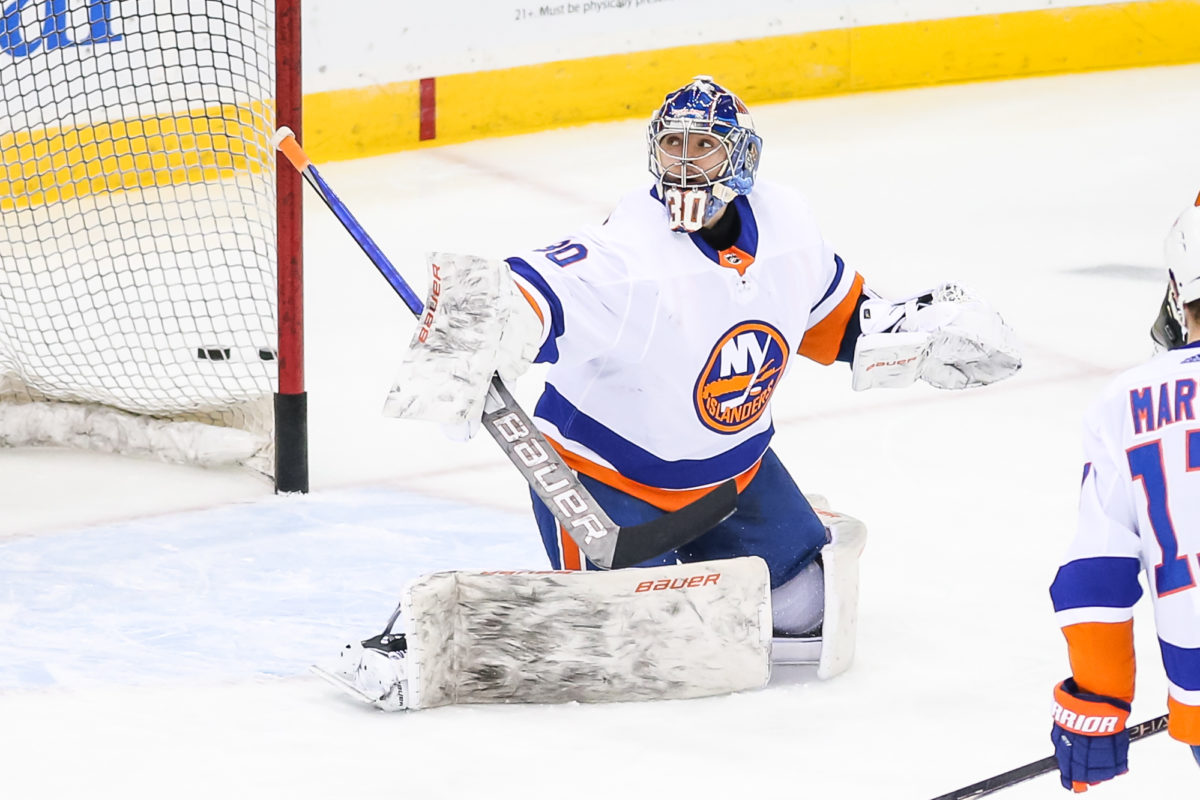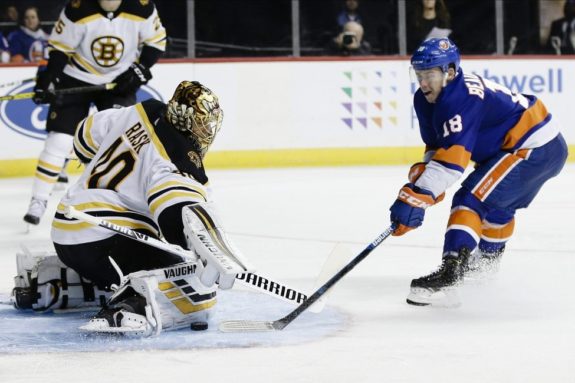If the Boston Bruins are going to take down the New York Islanders and earn themselves a spot in the NHL’s conference finals, it’s likely going to come down to how well Tuukka Rask performs.
Before breaking down why Rask will be such an integral piece to the Bruins’ potential success in Round 2, though, we should probably look at how the Bruins performed against the Islanders during the 2020-21 season.
When the Bruins and Islanders faced off during the regular season, the Bruins came away with a 3-3-2 record. In the first five meetings of the season, they would go just 0-3-2, allowing 18 goals against while only scoring eight goals of their own. The worst of these five games came on Feb. 25 when the Bruins would score just two goals while Jaroslav Halak allowed seven goals on 37 shots.
Related: Islanders & Bruins Second Round Series Preview
Following the trade deadline, however, the Bruins would find their footing against the Islanders and would go 3-0-0 (including one overtime win) against them while outscoring them 10 goals to three in the process. It was a testament to how much better the team was following the trades that landed them Taylor Hall, Curtis Lazar and Mike Reilly and how anything that happened prior has to be taken with a grain of salt.
Though the Islanders did struggle heading into the playoffs, going just 3-4-3 in their last 10 regular-season contests, they were able to pull it together in the playoffs. The biggest discrepancy between the Islanders and the Pittsburgh Penguins in their opening-round series was undoubtedly the player between the pipes for each team.
Islanders’ Goaltending Was Superior to Penguins’
On one side, the Penguins had Tristan Jarry who would allow 21 goals in six games against the Islanders. He’d finish the series with a 3.18 goals against average and a .888 save percentage. It was far from the performance the Penguins wanted out of their goaltending but it was more than ideal for a New York team looking to capitalize.
For the Islanders, the net was shared by Semyon Varlamov and Ilya Sorokin. Though Varlamov would put together a Vezina Trophy-calibre season, going 19-11-4 with a 2.04 goals-against average, .929 save percentage and a league-best 21.97 GSAA during the regular season, his playoff totals left a lot to be desired. He’d go 0-2-0 in the first round with a 3.61 goals-against average and a .903 save percentage.
For Sorokin, the story was very different. A very good rookie season that saw the 25-year-old go 13-6-3 with a 2.17 goals-against average, a .918 save percentage and a 5.87 GSAA was completely topped by his first-round performance. In four playoff games so far, Sorokin has gone 4-0-0 with an impeccable 1.95 goals-against average and a .943 save percentage.

While the Bruins are going to have to figure out Sorokin and potentially Varlamov, the biggest key to their success against the Islanders in the second round is going to have to be in their own net.
The Bruins offense was able to put things together nicely following the trade deadline and though the team can score, the Islanders play a very tight style of hockey. Bruce Cassidy would allude to this fact himself when asked to compare the two potential opponents his team would have to match up against.
“Obviously the Islanders play a less open system than Pittsburgh, so maybe a little more similar to our style where they still want to score, but they’re going to be a little tighter and are comfortable in those 1-1 games,” said Cassidy. “The Islanders are a little heavier and tougher to get it inside.”
Because of this, Rask is going to have to play as well as he did against the Washington Capitals in the first round of the playoffs. While that may feel like a tall-task given Rask would go 4-0-1 with a 1.81 goals-against average and a .941 save percentage in the first round, there are a few things to factor in here.
Rask Should Give Bruins Confidence Heading Into Round 2
The first thing to note is that the Capitals would score 35 more goals than the Islanders did during the regular season and have a far more potent offense in general. Secondly, many of the goals that actually found their way past Rask would actually go in as a result of some sort of tip or deflection in front that made his job infinitely harder in those specific scenarios. In total only three of the 10 goals he allowed went in cleanly, making his already-sparkling numbers that much more impressive.
Finally, and potentially the most important thing to consider here, is that Rask would play excellently against the Islanders during the regular season. In five appearances, Rask would go 2-2-0 with a 1.86 goals-against average and a .925 save percentage.

It’s unlikely the Islanders will find a way to average 3.5 goals-per-game against the Bruins and Rask like they did against the Penguins and Jarry. If Rask can continue to perform like this, the Bruins should feel comfortable matching up against the Islanders.
To be clear, no matchup is ever easy in the postseason. The series will be anything but simple and the team will have to compete hard in every game with the mindset that this Islanders team can and will win games against the very best teams in the NHL. With that said, though, the Bruins seemingly match up very well against the Islanders and proved as much following the trade deadline.
It’ll be an interesting series that could come down to a goalie-duel between these two teams. With very good goalie tandems on both sides of the ice, every single goal should be meaningful in this series.